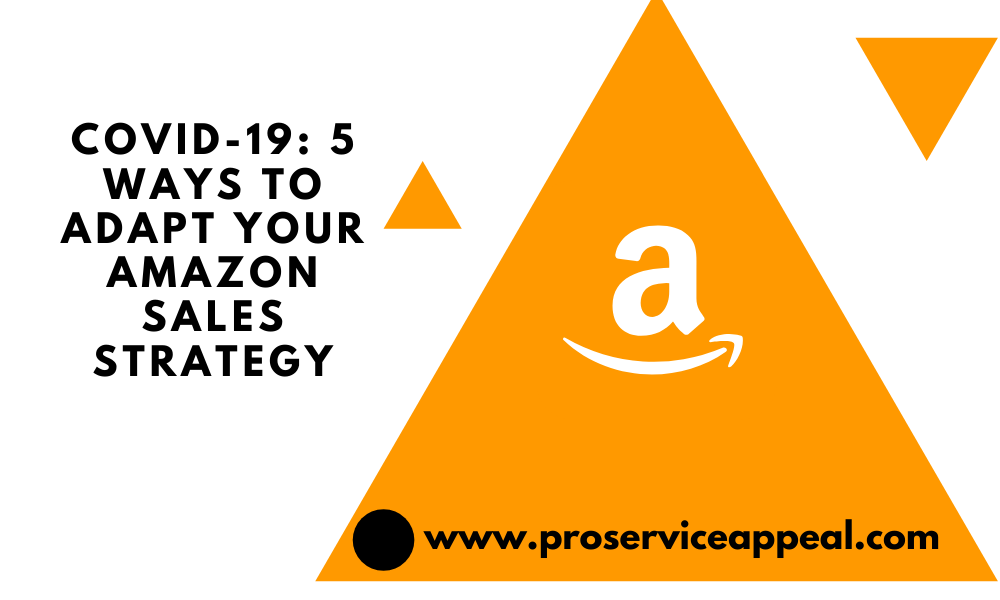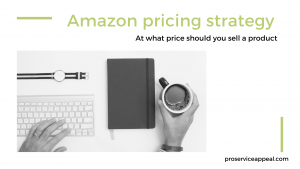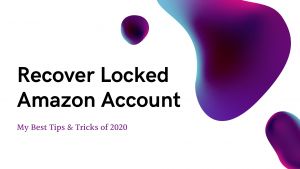In this article, we invite you to discover five ways to adapt your sales strategy on the Amazon marketplace.
Advice is offered to you in order to safeguard your business in the current environment that we know.
Table of Content
During the current COVID-19 crisis, Amazon sellers face significant challenges. These challenges are due to recent marketplace policy changes, increased demand for products, and delays in supply chains.
Stay informed of Amazon policy changes
The first change in Amazon policy related to COVID-19 occurred on March 17, 2020. When the marketplace announced that it would limit FBA (Fulfillment By Amazon) shipments for non-essential items. The platform also announced that it would only accept high demand products, those which are now considered essential.
This temporary policy came into effect in order to free up storage space for basic products. These products are in particular groceries, medical supplies, basic necessities for babies, health and beauty products, pet supplies, and other essential items. These are the most sought after products today. The products customers buy to stay safe, healthy when confined to their homes.
This announcement was a bombshell for some merchants. Especially for those who see their sales increase … Those who sell products that are not considered by Amazon to be essential. These items include toys, board games, home office supplies, DIY items, etc.
Note that Amazon does not authorize the registration of new products related to coronaviruses, such as hand sanitizers and face masks. The marketplace also closely monitors its markets to detect false claims incorporating keywords like “coronavirus” in product descriptions for example.
Amazon recently deleted a million product sheets containing such COVID-19 claims. This is why it is essential that all sellers check their product catalog to ensure that it complies with current policies. This is to prevent your account from being suspended.
My Top 5 Amazon Sales Strategy Are:
Explore other distribution channels
The policy change for non-essential products was originally scheduled to last until April 5, 2020. However, in an email sent by Amazon to its sellers on March 27, the company said it was extending that date.
Sellers can check the Restock Inventory page of their Seller Central account to see if some of their products are eligible and to see if they can resend their stock to FBA. For products that do not yet qualify, sellers must find another processing option if their FBA stocks are low.
If your FBA stock is low, you can change the logistics option to “Seller Fulfilled Prime (SFP)” or “Fulfilled by Merchant (FBM)”. Please note that SFP is only an option for you if you have been accepted into this program in the past. Amazon does not accept new registrations for its SFP program.
Whether you choose SFP or FBM, you will need to have the ability to store, fulfill, and ship all orders on your own. If you cannot do this, you can partner with a third party logistics company and move your stock to its warehouse asking them to handle all customer shipments for you.
Consider other market places
Amazon represents nearly 40% of the US e-commerce market. But given its constantly evolving policies, fierce competition, and high selling costs, it’s time to consider selling your products on other marketplaces. Have you thought about it?
Relying on Amazon as the only sales channel makes sellers vulnerable, especially in these volatile times. A diversified sales strategy on marketplaces can help you avoid certain pitfalls. Like that in particular of relying exclusively on a single sales channel during unexpected events.
Although Amazon is at the head of the ecosystem (given the size of its audience), other marketplaces offer growth opportunities.
So think about diversifying your distribution channels and choosing marketplaces relevant to your business. Combine generalist platforms and so-called “niche” marketplaces dedicated to your sector of activity.
Adjust your advertising expenses
73% of brands advertise on Amazon, compared to 57% in 2019. Yes, more and more companies are promoting their business in the marketplace.
Many sellers and brands run ads on Amazon to increase the visibility of their products and attract more customers to their ads.
However, given the increase in the number of buyers on Amazon, your ads can do more harm than good. Especially if your stock levels do not meet the demand of your customers. This is why you must reassess your advertising expenses.
When you established your advertising budget, you probably did not take into account the current COVID-19 crisis. Now is the time to reallocate your advertising spend based on demand and inventory. If stocks are low, stop advertising for these products. Instead, allocate your expenses to advertising products with a high level of stock.
Create valuable content adapted to the current environment
As everyone has to stay with us, we do most of our shopping online. That’s why quality content is more crucial than ever. It’s up to you to take this opportunity to engage with your customers. It is also up to you to provide quality content to promote your brand and boost sales.
The new content you create may be for your social networks. Create a community for your brand, produce live video, and find other ways to expand your customer base.
If you’re selling a kitchen gadget, share a video of how to use the product, or share recipes. If you sell sports equipment, share tips on how to incorporate it into home workouts.
Think about how your product meets the current needs of people who stay at home. Then promote your content based on these needs!
It’s your turn! #staysafe and #stayhome
For More Support on Amazon Sales Strategy Contact us
US/UK/CANADA(Other countries) +1-(281)-258-1027



